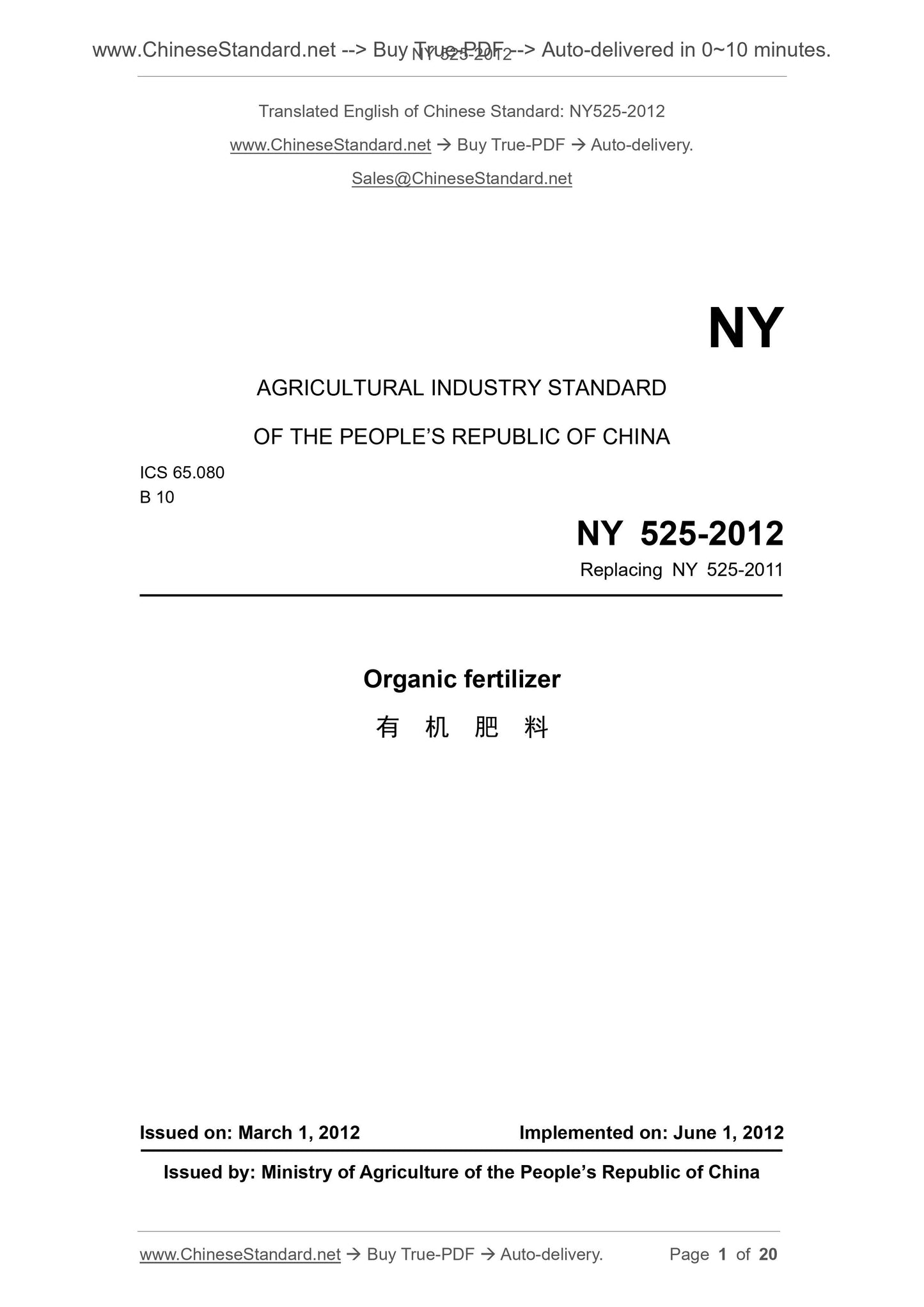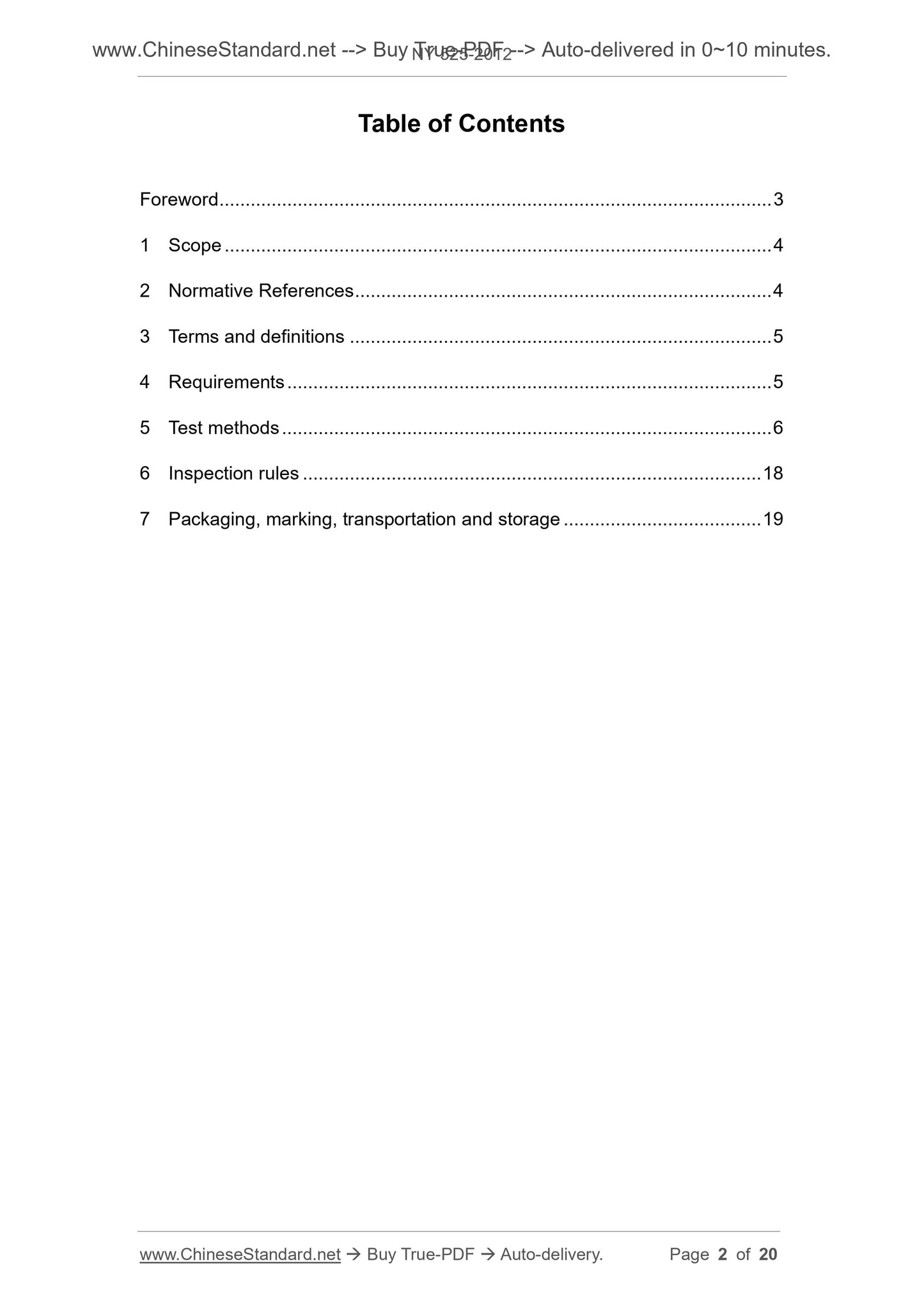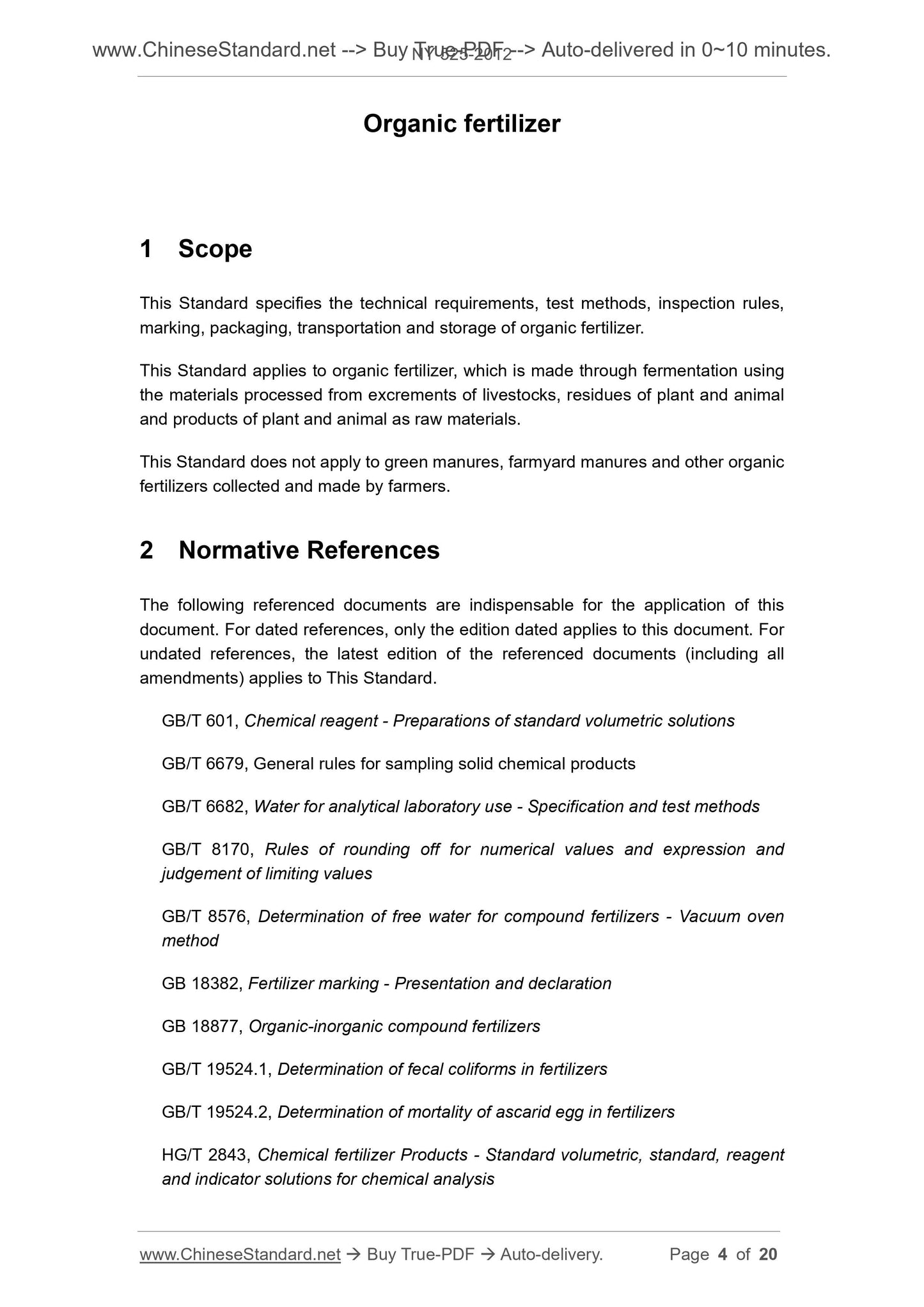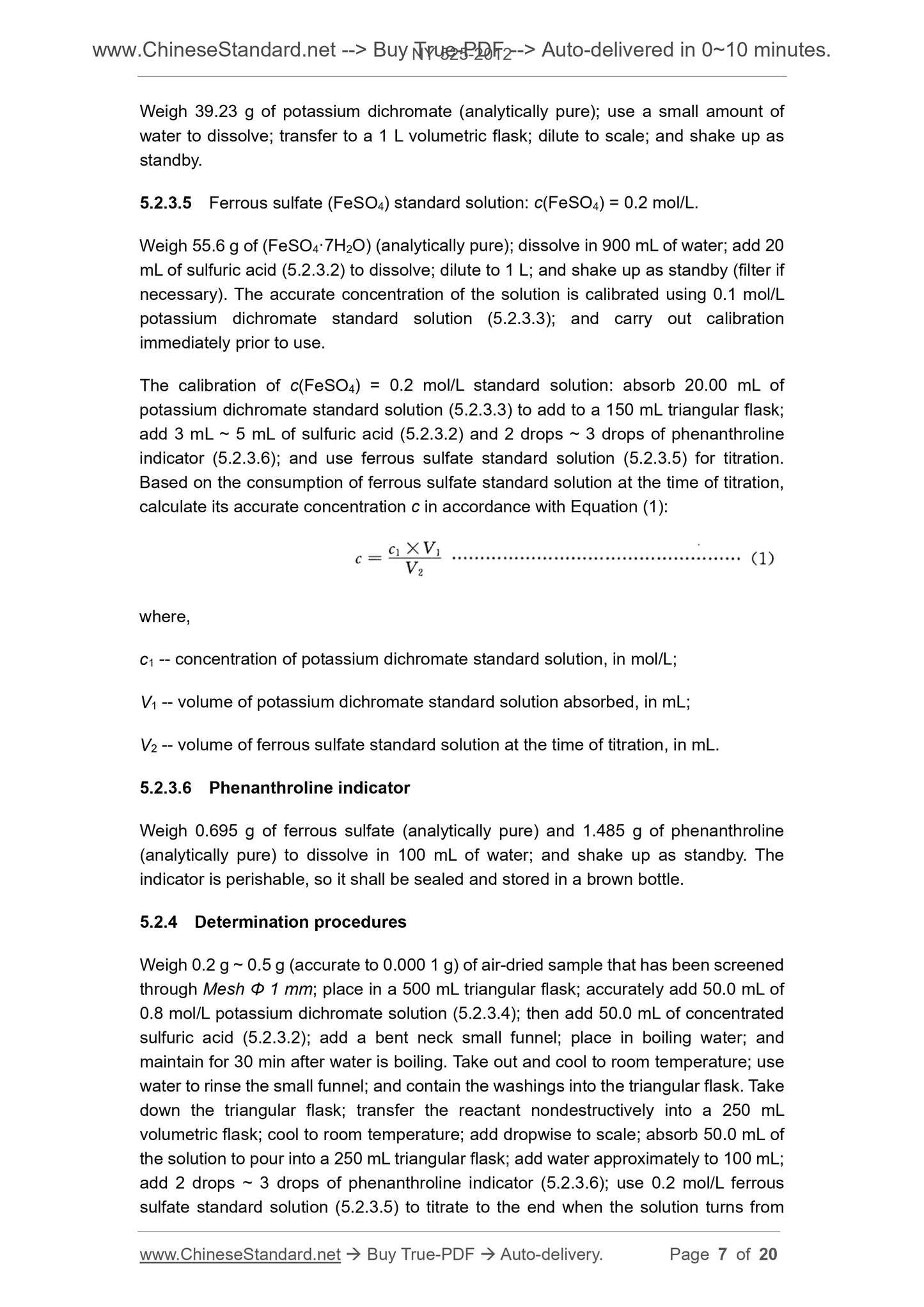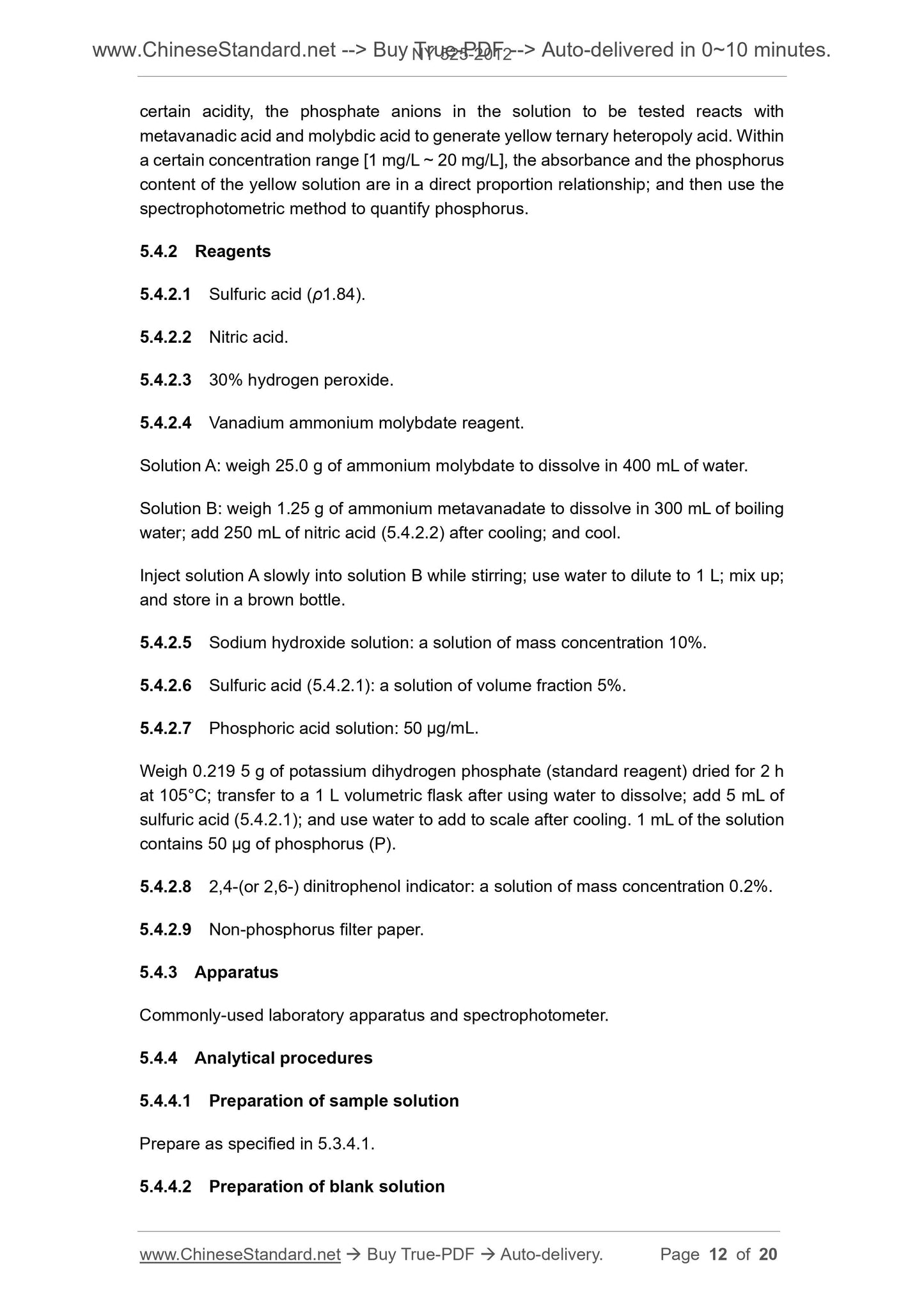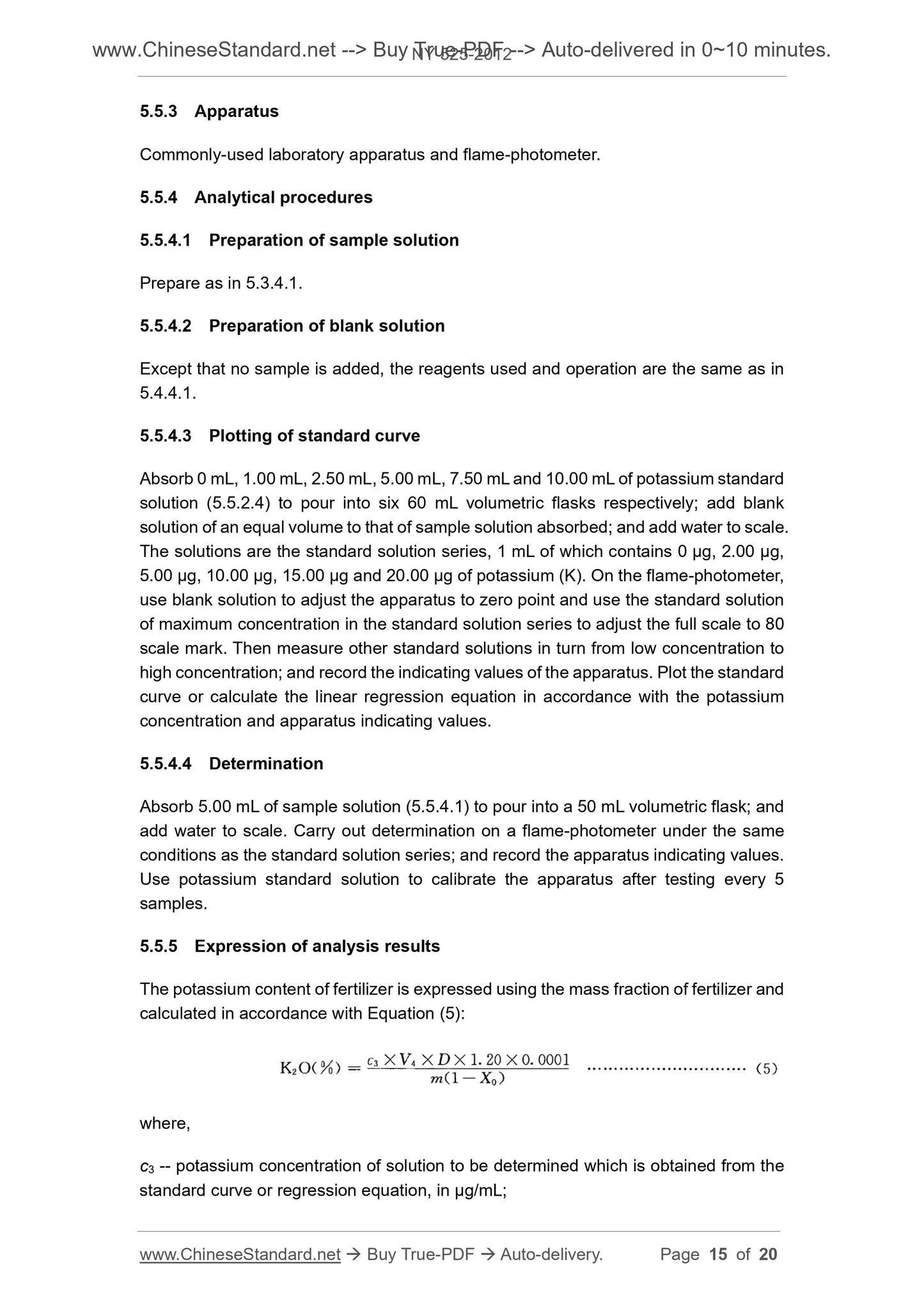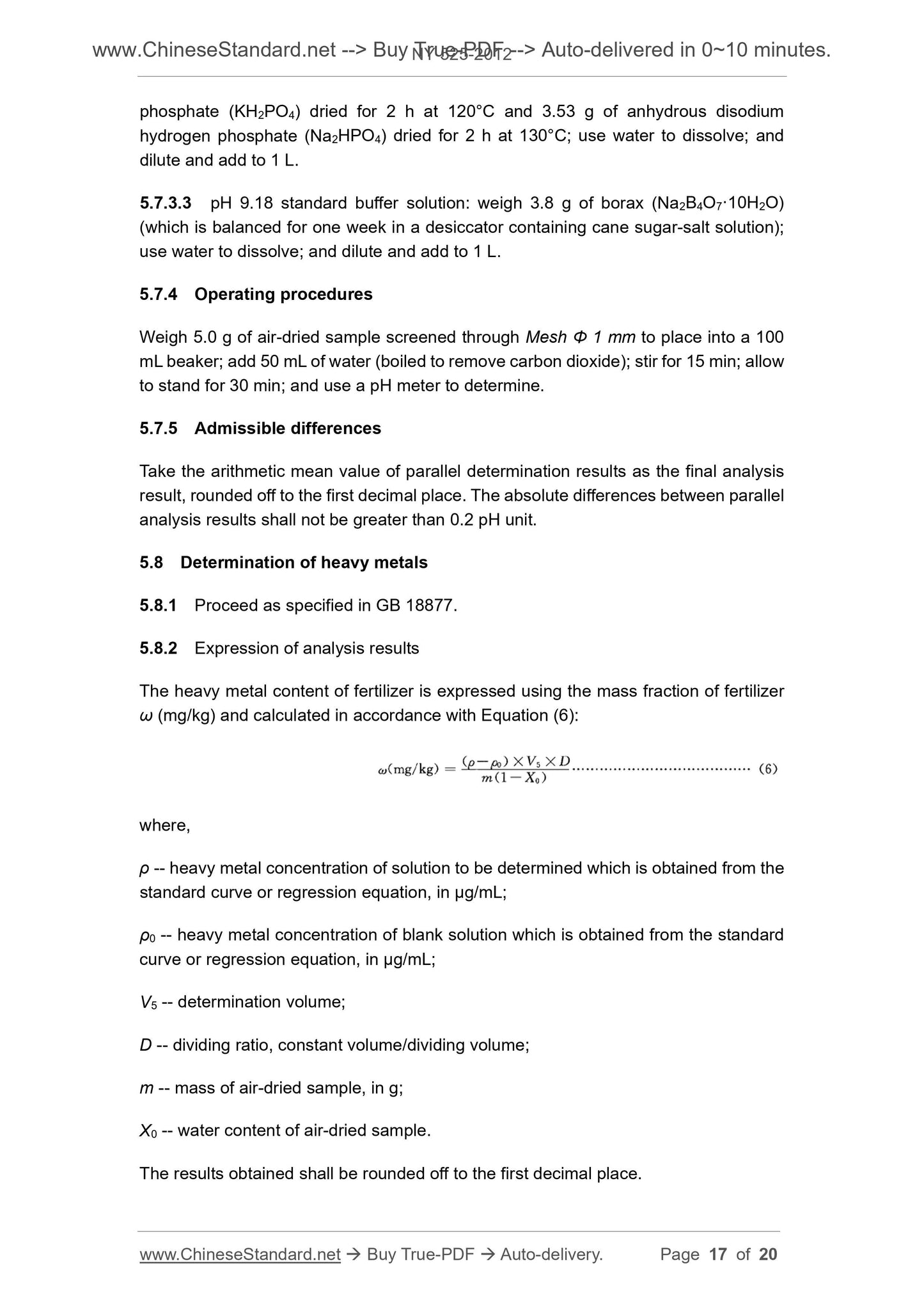1
/
of
7
www.ChineseStandard.us -- Field Test Asia Pte. Ltd.
NY 525-2012 English PDF
NY 525-2012 English PDF
Regular price
$115.00
Regular price
Sale price
$115.00
Unit price
/
per
Shipping calculated at checkout.
Couldn't load pickup availability
NY 525-2012: Organic fertilizer
Delivery: 9 seconds. Download (and Email) true-PDF + Invoice.Get Quotation: Click NY 525-2012 (Self-service in 1-minute)
Newer / historical versions: NY 525-2012
Preview True-PDF
Scope
This Standard specifies the technical requirements, test methods, inspection rules,marking, packaging, transportation and storage of organic fertilizer.
This Standard applies to organic fertilizer, which is made through fermentation using
the materials processed from excrements of livestocks, residues of plant and animal
and products of plant and animal as raw materials.
This Standard does not apply to green manures, farmyard manures and other organic
fertilizers collected and made by farmers.
Basic Data
| Standard ID | NY 525-2012 (NY525-2012) |
| Description (Translated English) | Organic fertilizer |
| Sector / Industry | Agriculture Industry Standard |
| Classification of Chinese Standard | B10 |
| Classification of International Standard | 65.080 |
| Word Count Estimation | 14,153 |
| Older Standard (superseded by this standard) | NY 525-2011 |
| Quoted Standard | GB/T 601; GB/T 6679; GB/T 6682; GB/T 8170; GB/T 8576; GB 18382; GB 18877; GB/T 19524.1; GB/T 19524.2; HG/T 2843; NY 884; " product quality and product quality appraisal arbitration test management approach "National quality and Technical Supervision Order |
| Regulation (derived from) | Ministry of Agriculture Bulletin No. 1729 |
| Issuing agency(ies) | Ministry of Agriculture of the People's Republic of China |
| Summary | This standard applies to the provision of organic fertilizer technical requirements, test methods, inspection rules, marking, packaging, transportation and storage. This document applies to manure, plant and animal residues, and animal and plant products |
Share
